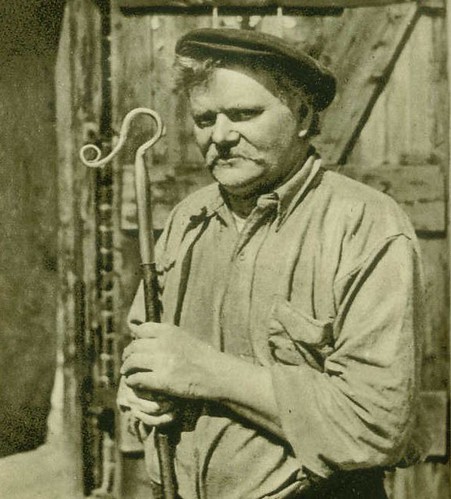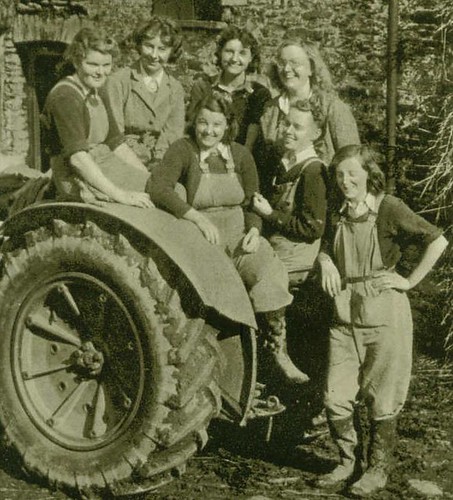That’s the question Barbara Ehrenreich tries to answer in her brilliant Blood Rites: Origins and History of the Passion of War. Or, to put it more precisely, what predisposes the human species to get caught up in war fever?
Her answer, to simplify, is that it comes from the fact that we are the only species to have gone from being mainly prey to almost entirely predator. “Here is what we might call the missing link within the theory of human evolution itself: how a poor, shivering creature grew to unquestioned dominance. Before and well into the age of hunting, there must have been a long, dark era of fear when the careless and stragglers were routinely picked off, when disease or any temporary weakness could turn man into meat.” (P. 45)
The point at which the roles began to turn, Ehrenreich reports, citing William H. McNeil among others, is when humanities and humans started to act as a group, making noise, throwing sticks and stones and otherwise acting together. “As any demagogue knows, a crowd is most likely to bond into a purposeful entity when it has an enemy to face. Millennia of terror seems to have left us with another ‘Darwinian algorithm’: that in the face of danger, we need to cleave together, becoming a new, many-headed creature larger than our individual selves.” (p. 82)
Further,: “The transformation from prey to predator, in which the weak rise up against the strong, is the central ‘story’ in early human narrative. Some residual anxiety seems to draw us back to it again and again. We recount it as myth and reenact it as ritual, as if we could never be sufficiently assured that it has, indeed, occurred.” (p. 82)
And humans continue to promote this anxiety culturally – through stories of beasts “coming to get them” if they’re bad, through horror movies, through Roman ‘games’ plus the human child is for a very long time just as vulnerable as our early ancestors.
The hunting that occurred, as we got to the top of the food chain, was primarily a large group activity – herds that occurred in great numbers were driven off cliffs, into bogs or human-made traps, a task that would require every member of the tribe to participate. It was only perhaps as recently as 15,000-10,000 years ago, with the combined effects of climate change and, probably, human predation, that animal numbers fell to such a point that a few mobile, adult individuals would travel, perhaps long distances, to stalk and spear game.
Not coincidentally, Ehrenreich suggests, that roughly coincides with the first evidence of what looks to us like war, a rock draw in Spain showing bands of stick figures wielding bows and arrows against one another. Graves from the same era in Egypt and East Asia support that conclusion (p. 117)
But this was not a case of competition. Ehrenreich suggests that as gathering and crop growing developed “the majority of adult men would have found themselves in need of some substitute for the hunter-defender role. As encounters with wild animals (both game and predators) became less central to human survival, so, potentially, did adult males become less central to the survival of women and children. In their engaging study of warfare among southwestern American Indians, anthropologists Clifton B. Kroeber and Bernard L. Fontana propose that war may indeed have arisen to fill the void. One by one, they eliminate the various materialist theories – involving land and access to water – which have been offered to explain these peoples’ perpetual wars, and propose instead that war exists because it is a prestigious thing for men to do, that it is an exciting and even “religious” undertaking.” (p.124)
And once this direction was taken, it was hard to stop. “As it spreads from place to place, war tends to stamp a certain sameness on human cultures. At the most obvious level, it requires that each human society be as war-ready as the other societies it is likely to encounter … No doubt there are other directions in which human cultures might have evolved – towards greater emphasis on the arts, for example, or philosophy, or more lighthearted games and rituals. But war, once chosen by some, quickly became the ‘unchosen direction’ imposed on all.” (p. 134)
War has traditionally been analysed by reference to social and economic structures of societies, but Ehrenreich says, it has persisted through all of these. It can be thought of she says, as a meme. Ehrenreich says this concept is still rather loose and inadequately theorised, but suggests that in the case of war “it would have to be conceived as a loose assemblage of algorithms or programs (in the computer sense) for action ” (p. 234)
“If war is understood as a self-replicating entity, we should probably abandon the many attempts to explain it as an evolutionary adaptation which has been, in some ecological sense, useful or helpful to humans. … Culture, in other words, cannot be counted to be ‘on our side’.” (p. 235)
“It is … a parasite on human cultures – draining them of the funds and resources, talent and personnel, that could be used to advance the cause of human life and culture. But ‘parasitism’ is too mild a term for a relationship predicated on the periodic killing of large numbers of human beings. If war is a ‘living’ thing, it is a kind of creature that, by its very nature, devours us. To look at war, carefully and long enough, is to see the face of the predator over which we thought we had triumphed long ago.” (p. 238)
But there are actions that can be taken to combat the meme, for “if the twentieth century brought the steady advance of war and war-related enterprises, it also brought the beginnings of organised human resistance to war. Anti-war movements, arising in massive force in the latter half of the century, are themselves arising in massive force in the latter half of the century, are themselves products of the logic of modern war, with its requirements of mass participation and assent. When the practice and passions of war were largely confined to a warrior elite, popular opposition to war usually took the form of opposition to that elite.” (p. 239) And within anti-war movements, humans can discover that euphoria of banding together for common survival, Ehrenreich suggests, that they first found when a band of humble hominids drove off a sabre-toothed tiger by working together.
It is a brilliant account, and I’d highly recommend reading the book, which has far more complexities than I have space for here. My edition is Virago, published 1997.
Which makes me think about bringing it up to date. What is changing in the 21st century, it seems to me, is that certainly the dominant Western states are moving away from “mass” wars. Of course this is only a good thing, in the avoidance of bloodshed, but if wars are to be conducted by robots and drones, as the Americans seem to be aiming for, the impetus for anti-war movements that Ehrenreich identifies will have disappeared. (Unless of course the robots decide to rebel!) And if the humans involved are those from lower socio-economic groups (also the case in America and other Western societies), they’re the ones with the least voice to speak out against the wars in which their sons and daughters are dying.
Perhaps we all need to do something about that.



 About
About